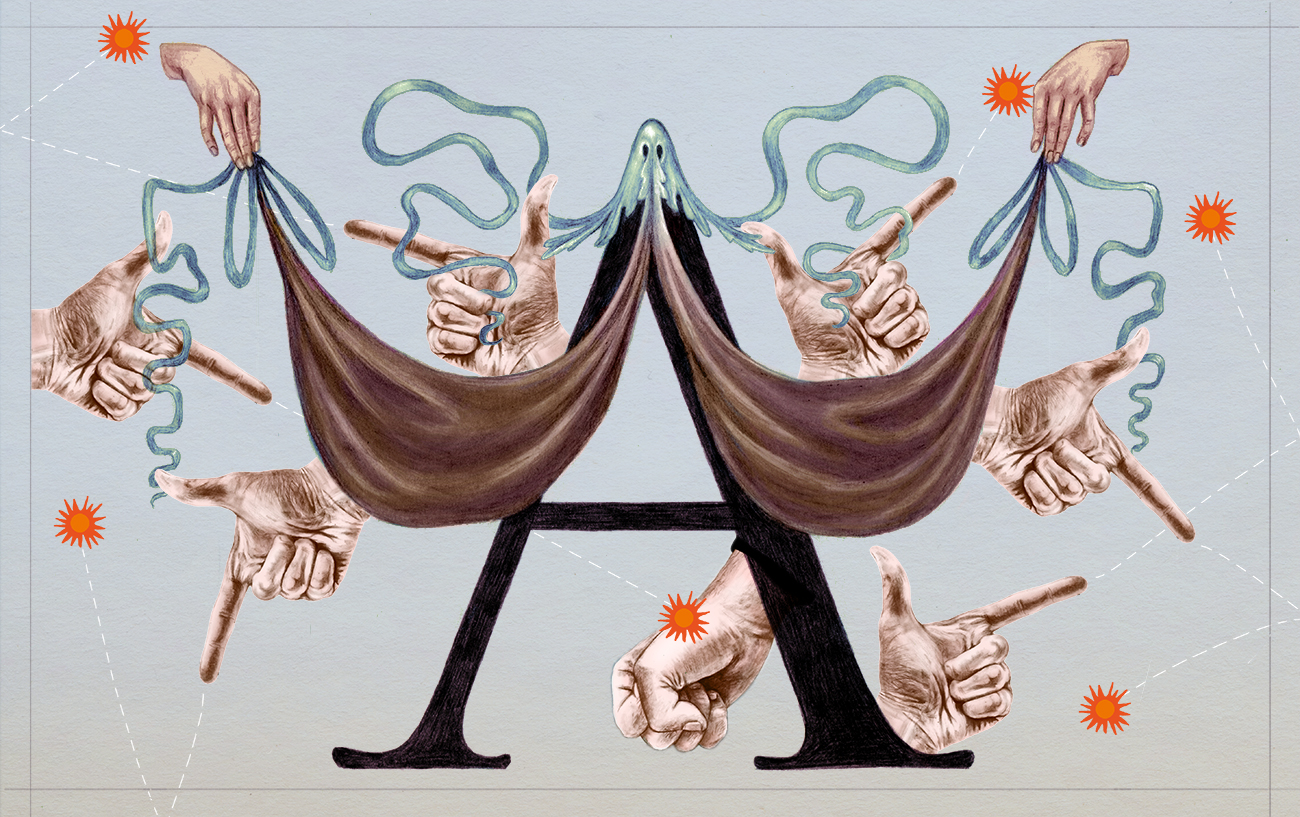
Agatha Christie and Changing Targets
By Erika Ruonakoski | Image Pauliina Mäkelä
“Even a blind man might put a knife in the heart by chance”, writes Agatha Christie in The Moving Finger. In this novel, the author of poison-pen letters chooses their victims haphazardly. Current social media posts appear to involve similar shots in the dark.
Agatha Christie’s The Moving Finger (1942) was published during the Second World War, but its undertone is light. The story is narrated by the fighter pilot Jerry Burton, who moves to a small town called Lymstock to recover from an air crash. He is accompanied by his sister Joanna. Soon the brother and sister receive an anonymous letter claiming that they are lovers. It turns out that a number of people in Lymstock have received similar poison-pen letters. What is more, one of these letters appears to drive one of the residents to suicide.
The beginning of the story seems to teach us that speaking ill of others may have severe consequences. Even so, such talk and gossiping are a normal part of human life. Gossips often deal with the hidden and yet important problems of the community. They can be used to create or confirm a view of what is acceptable behaviour and what is not. The author of the poison-pen letters is not exactly gossiping, however, for they send their message directly to objects of reproach. The author of the letters does not act as an enemy of particular individuals but rather as a moralist, who points the finger wherever the blame lies. The residents of the town soon start to doubt each other. Time and again they repeat: “No smoke without fire.” They start spreading rumours.
Another central sentence in the book is: “Even a blind man might put a knife in the heart purely by chance.” The idea is that even a random guess will finally hit the mark, provided we keep guessing long enough. When we display disapproval on social media, it is often a case of similar shots in the dark. On principle it is understandable that a person wants to point out an annoying phenomenon and to have their feelings of frustration reciprocated. Many of us do this when talking with friends or colleagues over a cup of coffee. We hardly worry about the justification of our reactions. After ranting and raving for a while we may be able to see the other side, and often we calm down. On social media, however, we invite large groups of people to share our indignation while the cause of that very indignation – a cyclist, fusspot, driver of an e-scooter, tourist, city dweller, country person, librarian – may be in our audience. Yet, under group pressure, it is difficult for objects of disapproval to step up and present their views. If they step up and challenge the views expressed in the group, they are killjoys and mischief-makers.
‘‘Dissatisfaction can function as the driving force of change. The criticism presented on social media does not always aim to achieve actual change, though. The immediate goal is to invite the chorus of the like-minded to join a momentary wave of disapproval.’’
Dissatisfaction can function as the driving force of change. The criticism presented on social media does not always aim to achieve actual change, though. The immediate goal is to invite the chorus of the like-minded to join a momentary wave of disapproval. We do not strive for detailed understanding of thing but to create a place in which to express negative emotions. It is as if the structure of the medium itself invited us to make public the turmoil that used to take place in private. What is more, those who seek attention may have to respond to “trending” issues whether they want it or not. On X, for instance, it is difficult to be seen if you do not assiduously follow and comment on others.
One of the minor characters in The Moving Finger points out that there are two kinds of motives for writing libel letters. The letters may be motivated by revenge, in which case the bullying is targeted at carefully chosen individuals. Alternatively, writing the letter itself can bring the author a morbid satisfaction, and this is when anybody can serve as a target. On social media, anybody can express their indignation. There is no illness to be eliminated. Or is our human characteristic of longing for social resonance at the root of the “illness”?
Social media inevitably appeals to our need to join together and to be seen. What would social media be like if it satisfied this need but abandoned disapproval, posing and liking as the primary modes of expression?
Literature
Christie, Agatha. 1942. The Moving Finger. New York: Dodd, Mead and Company.
Robbins, Megan L. and Alexander Karan. 2019. “Who Gossips and How in Everyday Life?” Social Psychological and Personality Science 11:2, 185–195.


Leave a Reply